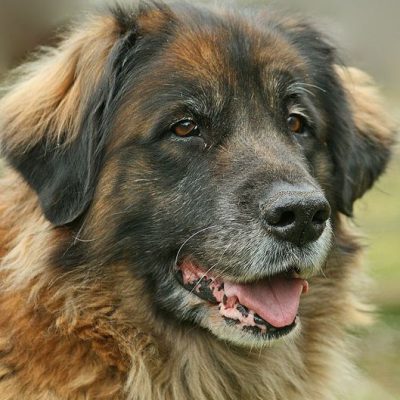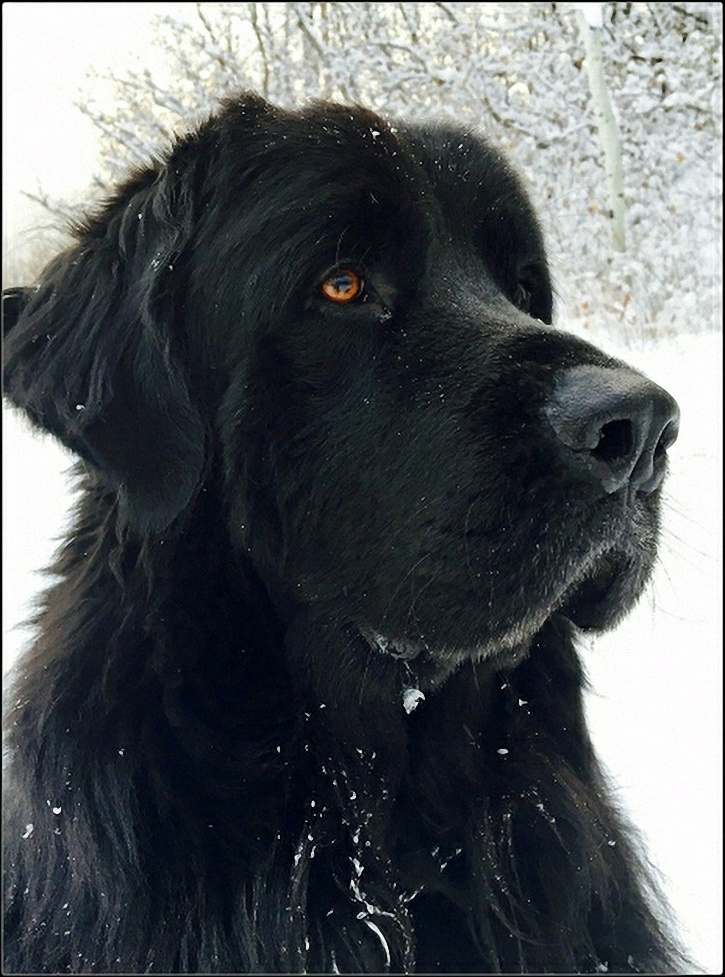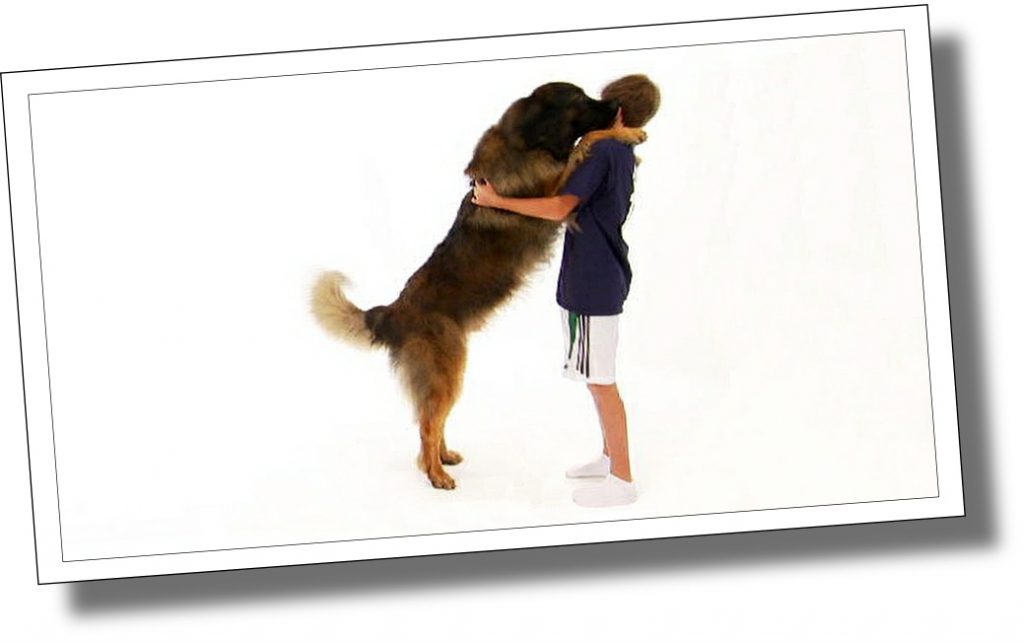Many people ask why we use large breed dogs.
We carefully screen our Leonbergers, Newfoundlands, and St. Bernards for temperament and durability. These breeds are all considered working dogs and are known for a sweetness of temperament and an affinity for children. They are friendly and steady, with a good combination of affection, intelligence, and strength. These dogs are often referred to as “Nanny” dogs (“Nana” from J. M. Barrie’s Peter Pan was a black & white Newfoundland) and are frequently used for therapy and rescue work. In fact, many are bred to be companions to the people who share their lives. We chose these breeds to do this work because they are thought to be particularly non-reactive. This means they are calm in situations where other dogs might behave poorly or aggressively. In essence, these dogs are bred to be gentle giants.
Leonbergers

- Height at shoulders: males average 29.5″, females average 27.5″
- Weight: males average 140–150 lbs., females average 115 lbs.
- Temperament: Lively disposition, stable and affectionate. Highly patient and non-reactive. Rather than becoming aggressive, this breed generally assumes a defensive position in front of vulnerable family members if the situation becomes too intense (they will protect but not attack). They are serious in nature, eager to please and get along well with other dogs. The Leonberger is active and coordinated and has been used successfully for search and rescue, obedience, water rescue, tracking, therapy work, and, of course, as a family companion.
Newfoundlands

- Height at shoulders: males average 28″, females average 26″
- Weight: males average 140 lbs., females average 110 lbs.
- Temperament: Outstanding, sweet temperament, courageous, and generous. They are devoted and loyal, social and gentle. As a breed, Newfoundlands love to swim and will lie in the water given a chance. Playful, patient, and loving with children. This breed has been used for water rescue, drafting, carting, service work, and as a valued companion animal.
Saint Bernards

- Height at shoulders: males and females average 24″-28″
- Weight: Varies significantly, with a range of 110 – 200 lbs.
- Temperament: Friendly, extremely gentle, and slow-moving. They are very tolerant of children, obedient, loyal, and eager to please. They tend to drool after they drink or eat. The St. Bernard has an excellent sense of smell. They have been used for search and rescue, weight pulling (drafting), carting, service work, and as a drool-worthy family companion.

These are very big dogs. You must be prepared to accept them as a member of the family because as a service dog, these canines will go wherever the family goes. This includes visiting relatives, birthday parties, picnics, and sporting events. These dogs will accompany your son or daughter as they are your child’s safety guardian. When a young child is running full-out, these dogs must have enough body mass to stop the child’s momentum completely. The dog does not get pulled over or lifted off its feet because it weighs up to twice the child’s weight. That’s why they are known as anchoring dogs!